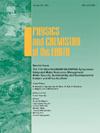在考虑气候变化影响的低影响开发系统中开发多目标哈里斯鹰优化(MOHHO)算法
IF 3
3区 地球科学
Q2 GEOSCIENCES, MULTIDISCIPLINARY
引用次数: 0
摘要
为了在气候变化条件下利用低影响开发(LID)系统控制和管理流域径流,本研究利用 SWMM 模型和 MOHHO 算法开发了一个模拟器-优化器模型。模型采用了植被沼泽、生物滞留池、透水路面和渗透沟渠四种低影响开发方式。因此,确定了德黑兰市 1 区和 3 区子流域在基准期(1988-2005 年)、近期(2030-2047 年)和远期(2048-2065 年)的 LIDs 面积,其目标是:(1)最大限度地降低 LIDs 的实施和维护成本;(2)最大限度地降低流域的外流径流量。本研究模拟了 RCP2.6、RCP4.5 和 RCP8.5 三种排放情景下的未来降雨量。通过比较 MOHHO 算法与 NSGAII 算法的收敛图,发现 MOHHO 算法的解更分散,运行时间更短。最后,在该模型的帮助下,得到了帕累托前沿形式的最优管理方案。结果表明,与不使用该系统相比,考虑到目标函数是使流域的出流洪水量最小化,洪水量平均减少了 50%。但是,如果重视第二个目标函数,即最大限度地降低成本,这一数值会降低 30%。最后,由于成本的降低和经济效益的提高,这些系统的实施和使用是合理的,对减少该地区的问题具有显著效果。本文章由计算机程序翻译,如有差异,请以英文原文为准。
Development of multi-objective Harris hawks optimization (MOHHO) algorithm in low-impact development systems considering the effects of climate change
In this research, to control and manage basin runoff by using Low-Impact Development (LID) systems in climate change conditions, a simulator-optimizer model is developed using the SWMM model and the MOHHO algorithm. Four LIDs of vegetative swale, bio-retention cell, permeable pavement, and infiltration trench have been used. Therefore, the areas of LIDs are determined in the sub-basins of Zone 1 and 3 of Tehran Municipality for the periods of the baseline (1988–2005), the near future (2030–2047), and the far future (2048–2065), with the objectives of (1) minimizing the cost of implementing and maintaining LIDs, (2) minimizing the amount of outflow runoff of the basin. In this research, the future rainfall under three emission scenarios RCP2.6, RCP4.5, and RCP8.5 has been simulated. By comparing the convergence diagram of MOHHO with the NSGAII algorithm, it was observed that the MOHHO has more dispersion of solutions and less run-time. Finally, with the help of this model, optimal management solutions were obtained in the form of the Pareto front. The results show that the flood volume was reduced by 50% on average compared to not using the system, considering the objective function of minimizing the outflow flood volume of the basin. But this value is reduced by 30% by giving importance to the second objective function, which is to minimize costs. Finally, due to the reduction of cost and economic efficiency, the implementation and use of these systems can be justified and have a significant effect in reducing the problems of the region.
求助全文
通过发布文献求助,成功后即可免费获取论文全文。
去求助
来源期刊

Physics and Chemistry of the Earth
地学-地球科学综合
CiteScore
5.40
自引率
2.70%
发文量
176
审稿时长
31.6 weeks
期刊介绍:
Physics and Chemistry of the Earth is an international interdisciplinary journal for the rapid publication of collections of refereed communications in separate thematic issues, either stemming from scientific meetings, or, especially compiled for the occasion. There is no restriction on the length of articles published in the journal. Physics and Chemistry of the Earth incorporates the separate Parts A, B and C which existed until the end of 2001.
Please note: the Editors are unable to consider submissions that are not invited or linked to a thematic issue. Please do not submit unsolicited papers.
The journal covers the following subject areas:
-Solid Earth and Geodesy:
(geology, geochemistry, tectonophysics, seismology, volcanology, palaeomagnetism and rock magnetism, electromagnetism and potential fields, marine and environmental geosciences as well as geodesy).
-Hydrology, Oceans and Atmosphere:
(hydrology and water resources research, engineering and management, oceanography and oceanic chemistry, shelf, sea, lake and river sciences, meteorology and atmospheric sciences incl. chemistry as well as climatology and glaciology).
-Solar-Terrestrial and Planetary Science:
(solar, heliospheric and solar-planetary sciences, geology, geophysics and atmospheric sciences of planets, satellites and small bodies as well as cosmochemistry and exobiology).
 求助内容:
求助内容: 应助结果提醒方式:
应助结果提醒方式:


